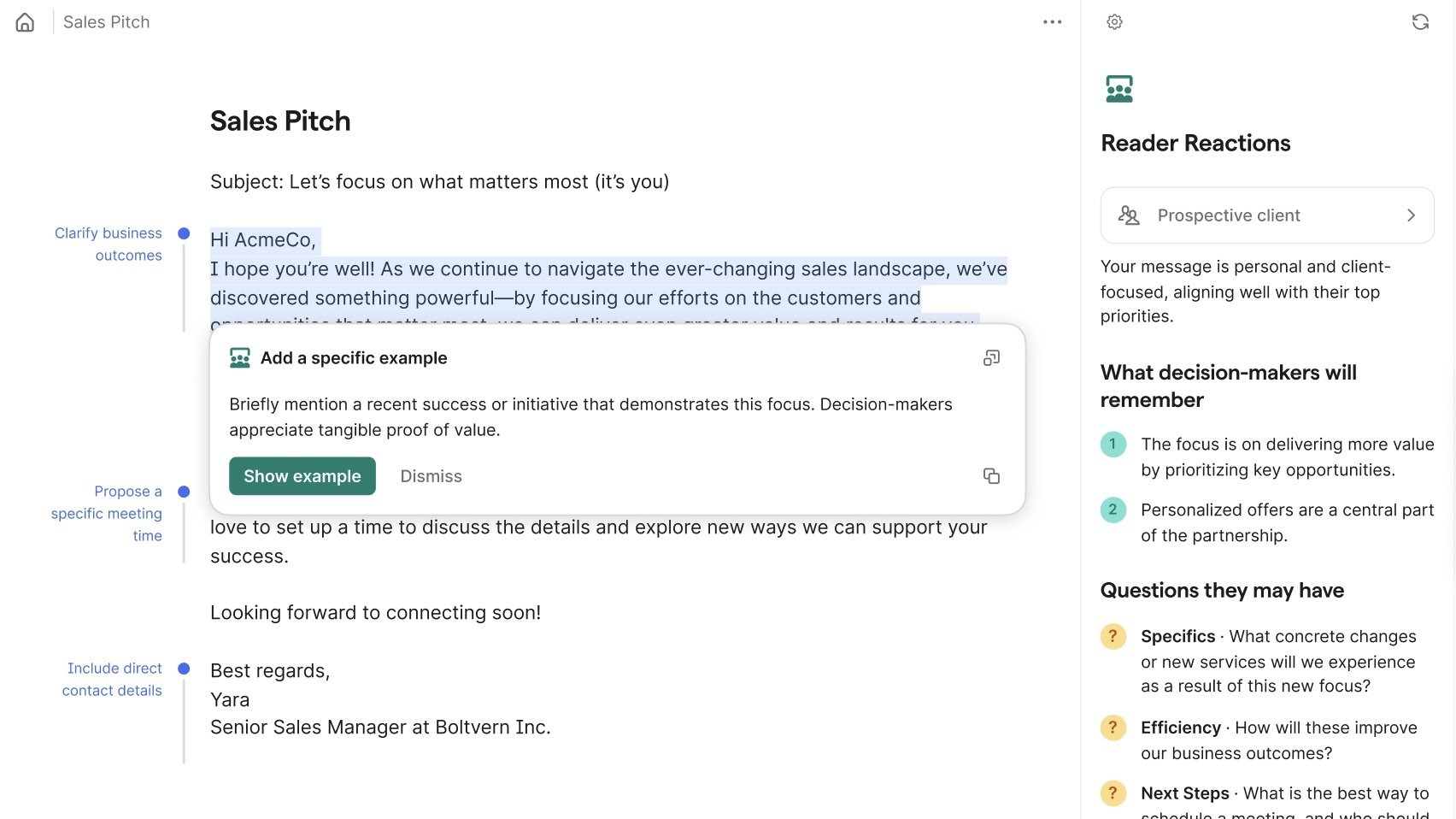If you use Grammarly to keep tabs on your spelling and grammar, you’re going to notice some changes.
That’s because Grammarly is introducing an overhauled experience for both free and paid users today. The immediate change you’ll notice is the new UI, “docs,” Grammarly’s new take on a word processor. (The company calls this an “AI writing surface.”) Like before, you can use rich text (bolding, italics, and underlining), headers, and lists, but as TechCrunch notes, the new writing interface works using blocks. You can add new blocks to add rich text, but also blocks to add things like separators, columns, and tables. It sounds to me like if you’ve used WordPress, you’ll be familiar with this setup.
You’ll also notice AI Chat in docs’ sidebar, which acts as a traditional AI chatbot. You can use it to ask for AI assistance, rather than leaving the app to do so. But beyond this, Grammarly is rolling out new AI features for its writing tool—namely, AI agents. AI Agents are designed to automate tasks for you, and in this case, Grammarly wants its agents to help writers—especially students and teachers—across a spectrum of issues. There are eight agents in total rolling out with this update, responsible for the following:
Reader Reactions: Identifies the target reader of your work, and anticipates questions or concerns they might want from your current draft.
AI Grader: This agent lets you add information about your schoolwork, so it can offer advice and grade estimations before you submit an assignment.
Citation Finder: Not only is this agent supposed to generate your citations for you, Grammarly says it can find evidence to support or dispute claims in your writing.
Expert Review: This agent folds in “subject-matter expertise” to punch up your piece to meet certain academic standards.
Proofreader: This sounds like more of the traditional Grammarly experience, offering line-by-line advice for improving your writing,
AI Detector: This agent gives an estimation of whether any given text appears to be human or AI-generated.
Plagiarism Checker: Compares your writing against “vast databases” of text to see if you’re infringing on any existing work.
Paraphraser: This agent can rework your writing to fit a certain tone.
While all writers can use these tools, Grammarly seems keen to target education with these updates. In the company’s view, students can use the AI tools to improve their writing, especially in relation to the target audience—say a teacher or instructor’s expectations. The company wants teachers, on the other hand, to use tools like AI Detector to weed out any students that might be relying a bit too much on AI tools. In Grammarly’s world, students and teachers can use AI for good, not cheating.
Like many AI tools, the advertised experience sounds great: Grammarly’s new AI experience sounds like working with eight experts at once on any given writing task. However, in practice, things might turn out differently. AI plagiarism detectors, for example, are less reliable than many believe. (These tools have told me that the U.S. Constitution was written almost entirely by AI.) Grammarly’s VP of enterprise product told TechCrunch as much regarding their AI Detector agent, though he says its agent is more accurate than any other product you can find, and there is evidence to suggest the tools are improving overall.
I also worry about the quality and accuracy of other tools. “Reader Reactions” relies on “publicly available” information about a given instructor. If a classroom of students follows AI advice generated from the same pool of data about this instructor, will the end results all sound exactly the same? AI also hallucinates, occasionally making up information entirely—will students take the time to review “Citation Finder’s” generations, to ensure that some of the sources aren’t bogus?
I get Grammarly’s mission here: AI isn’t going away, and students are increasingly using it in ways that might not necessarily help them learn. Rather than attempt to ban AI, why not embrace the technology, in a way that is beneficial to everyone involved? I do appreciate Grammarly isn’t offering students a way to generate whole paragraphs (or essays), but rather use the AI to engage with their existing work. But we also need to be wary of these tools limitations, something that often goes overlooked in all the AI hype and excitement.
